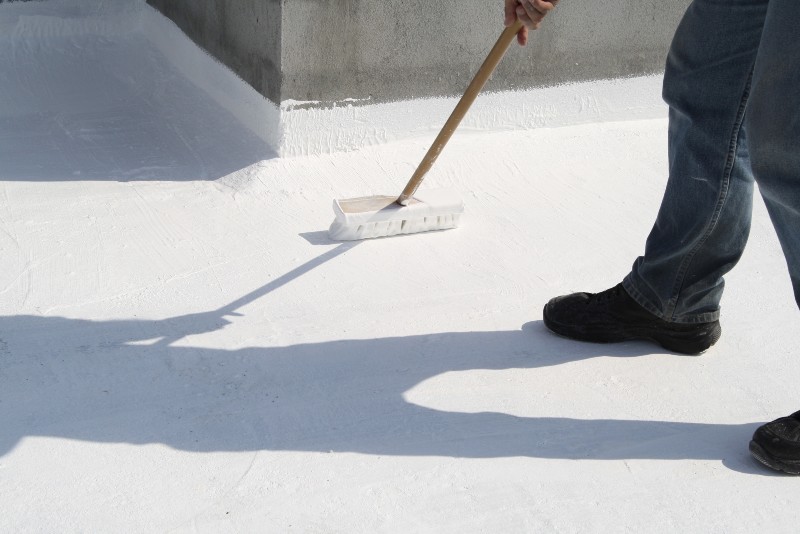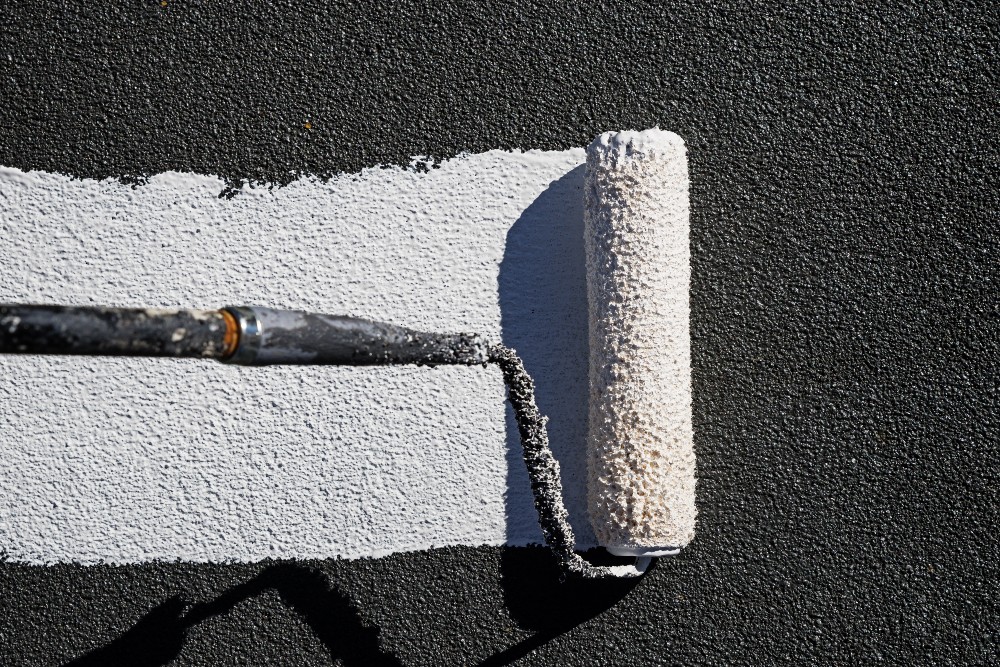Elastomeric roof coatings offer big benefits when properly applied by experienced roofing professionals. Unfortunately, improper application can result in major problems that can lead to thousands of dollars in repair costs. Here’s how experts apply elastomeric coatings so they stand the test of time.
What is an Elastomeric Roof Coating?
Most elastomeric roof coatings are classified as having both waterproof and weatherproof properties. Typically polymeric products, elastomeric roof sealers are designed to create a tight seal when applied to a roof. They are very effective at sealing leaks and preventing existing issues from getting worse.
As its name implies, an elastomeric coating will have elastic properties. Since they can flex, the coatings do not easily crack. Certain varieties have special properties that allow them to stretch as much as 600%. Whatever the case, virtually all elastomeric coatings are designed to last from 15 to 20 years with proper maintenance.
Because they are versatile and durable, these coatings can be applied during any season. Once the coating dries, the finished product forms a kind of membrane across the roof. That said, it’s important to carefully spray around any pipes, drains or other protruding components on the roof during application.
The Application Process
While elastomeric coatings are known for being easy to apply, there are plenty of ways to mess things up. Improper prep can lead to adhesion problems. Choosing the wrong product can lead to leaks, while application mishaps can lead to injury or structural issues down the line. This is why it’s always best to have your elastomeric coating applied by professionals with years of experience working with a variety of roofing materials.

When applying elastomeric coatings, reputable roofing contractors take great care to do the job right. While many have their own way of doing things, most follow a similar application process:
First roofers carefully clean the roof and prep it for application. This includes discarding large pieces of debris and using a blower or broom to eliminate dirt. Next, a power washer is generally used to wash the roof and eliminate remaining dirt and grease which can inhibit adhesion.
Before applying the elastomeric coatings, roofers will usually make any necessary repairs. There may be areas that require patching. There may also be cracks, blisters and other problem areas in need of attention. Some roofs will need an acrylic roof sealant or patching compound to reduce the risk of future leaks.
Once everything has been fully prepped, it’s time to apply the elastomeric roof coating. Roofers start by choosing a product that’s ideal for a roof’s material and slope. Some products have thicker consistencies which require rollers for application. Others are thin enough to be sprayed onto a roof.
It takes years of experience to safely use a spray rig to apply an elastomeric coating. While an amateur may be able to get away with it with some luck; more often, they will run into big problems which can put their safety and the roof itself at risk.
Even rolling comes with risk. When using a roller, the applicator must maintain a wet edge at all times. It’s also important to apply the coating evenly and strategically so as not to become trapped in a corner amid wet elastomeric coating. It’s also important to carefully seal any pipe edges or other fixtures.
Even one mistake can cause the coating to fail. When this occurs the structure can become vulnerable to leaks, which can lead to costly mold damage. How costly? Many people are stunned to learn that even a tiny roof leak can lead to major mold infestations requiring remediation costs that exceed $10,000.
Once the elastomeric roof coating has been properly applied, be sure to stay off the roof until it has cured. Although it will appear dry within about a day; the coating will not cure for at least a week. If it rains a couple of days after the application process, the moisture shouldn’t ruin the coating. That said, continuously wet weather can slow the curing process for a few weeks. To be safe, avoid stepping onto the roof for about a month.
Need help applying an elastomeric coating to your roof? For decades, the professionals at A to Z Roofing have served countless satisfied customers throughout the Denver metro and the Front Range. For nearly a quarter of a century, we have been the go-to source for expert residential roof repair and restoration for homeowners and businesses throughout Colorado. During this time, we’ve provided comprehensive service using only top-quality products. Contact our attentive team to learn how we can restore, repair or replace your damaged or aging roof.

